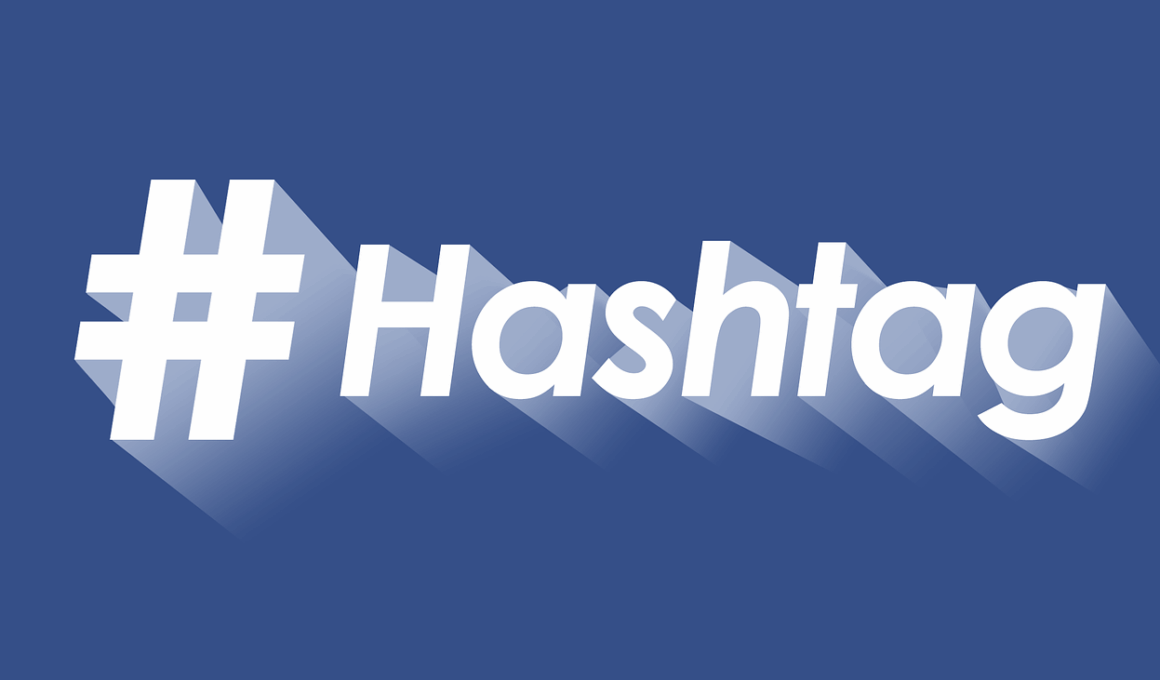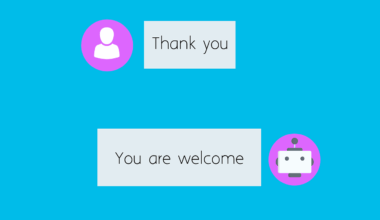The Impact of Industry-Specific Hashtags in Customer Service
Hashtags play a crucial role in social media, particularly within customer service domains. They enhance visibility and categorization, making it easier for customers to find specific support. By incorporating industry-specific hashtags, businesses can effectively target their audience and streamline their communication. For example, if a customer is seeking assistance with a telecommunications issue, using tags like #TelecomSupport can lead them directly to relevant content. This targeted approach greatly improves customer satisfaction, as users feel more connected and engaged. Furthermore, these hashtags facilitate the aggregation of conversations surrounding a particular service or product, helping companies identify common issues and trends. Analyzing this data through tools can provide valuable insights into customer behavior and preferences. Another significant benefit of utilizing hashtags is their ability to increase the reach of a company’s posts. When customers use these strategic tags in their inquiries, their posts become visible to a broader audience, inviting more voices into the dialogue. Consequently, brands that effectively use industry-specific hashtags are likely to improve their reputation and develop stronger relationships with customers.
The concept of hashtags originated on Twitter but has since proliferated across various platforms including Instagram, Facebook, and LinkedIn. Businesses have adopted hashtags not just for marketing but as a pivotal part of their customer service strategy. Hashtags enable a focused dialogue, allowing customers to categorize their queries and feedback efficiently. With more users pursuing instant responses, brands that utilize hashtags effectively can provide timely support. Utilizing popular or trending hashtags is advantageous as it positions the business within larger conversations. Customer service teams can monitor these hashtags to track sentiment and uncover potential issues quickly. Additionally, their widespread adoption means that customers are generally familiar with their use, making it a user-friendly option for both brands and clients. Engagement rates generally increase when hashtags are included in the messaging strategy, significantly improving the likelihood of responses. However, it is essential for brands to ensure the hashtags remain relevant to their products or services. Inappropriately used hashtags can lead to confusion, diluting the effectiveness of the conversation and potentially alienating consumers. Thus, thoughtful hashtag usage is vital in customer service.
Benefits of Using Hashtags in Customer Support
Effective use of hashtags in customer service can lead to numerous benefits for businesses. Firstly, they enable better organization of customer inquiries, allowing support teams to filter and prioritize responses. This can result in faster response times and enhanced customer satisfaction. Secondly, hashtags create a common language between brands and customers, fostering deeper connections through shared interests. Customers become more likely to engage and follow specific conversations related to their issues. Furthermore, well-chosen hashtags can enhance a company’s branding, further solidifying its presence within the industry. For instance, brands can cultivate their identity by using unique tags, making them instantly recognizable. This branding can also lead to organic market growth as satisfied clients share their experiences with others. Additionally, hashtags can be instrumental in promoting user-generated content. When customers use a brand’s dedicated hashtag, they essentially become brand advocates, sharing their experiences and opinions freely. This peer-to-peer interaction often proves to be more persuasive than traditional marketing. Overall, the strategic use of hashtags can transform customer service into a more interactive and engaging experience.
However, not all hashtags are created equal; their effectiveness greatly depends on specific characteristics. Popularity plays a crucial role, but relevance is equally significant. Brand-specific hashtags should resonate with the customer base while still aligning with current trends. Monitoring hashtag performance is essential in understanding their impact. Businesses can analyze which hashtags generate the most engagement and adjust accordingly. It’s also beneficial to create a mixture of widely used and niche-specific hashtags. The former increases visibility, while the latter connects with a targeted audience. Engaging with customers who use these hashtags can further enhance relationships since personalized responses reflect care. Customers appreciate when brands actively participate in conversations and take the time to address their concerns. Additionally, using hashtags consistently across platforms ensures that the branding remains coherent, maximizing the potential for engagement. Ultimately, brands that invest the time to choose, monitor, and adjust their hashtag strategies see improvements in their customer service delivery. This strategic approach fosters loyalty and trust between customers and the brand, ultimately leading to sustained success.
Challenges and Considerations
While hashtags offer benefits, they are not without challenges in customer service contexts. One significant challenge is the risk of over-saturation, where excessive use of hashtags dilutes their effectiveness. Adding too many hashtags can create a cluttered appearance, making it harder for the audience to engage effectively. Brands must strike a balance between usage and clarity, adhering to best practices of moderation. Another challenge is maintaining consistency across multiple channels. Businesses that operate on various social media platforms need to ensure that their hashtags align with respective audience demographics. Varying audiences mean different interaction styles, which can affect hashtag relevancy. Moreover, while hashtags can increase visibility, they also open avenues for negative feedback. Customers may use specific tags to highlight poor experiences, amplifying the conversation. Therefore, it’s vital for customer service teams to actively monitor these interactions, responding in a timely and professional manner. A proactive approach in managing conversations, particularly those involving criticism, helps to salvage customer relationships. Companies must equip staff with the skills to manage these challenges effectively, ensuring that customer service remains productive.
Another consideration involves the legal and ethical implications of hashtag use. Brands must be cautious about appropriating hashtags that may have sensitive connotations or misrepresent an issue. Researching the implications behind certain hashtags can prevent potential missteps that could damage a brand’s reputation. Furthermore, the rise of automated tools for hashtag generation can lead to generic suggestions that fail to capture a brand’s unique voice. While automation provides convenience, relying too heavily on these tools without human insight could result in an authentic connection being compromised. Therefore, integrating a personal touch in hashtag creation is essential. Brands should empower their employees to suggest appropriate hashtags based on their customer interactions for continuous improvement. Also, fostering a culture where feedback on hashtag effectiveness is encouraged can lead to better understanding and selection of impactful tags. By acknowledging these legal, ethical, and creative considerations, brands can navigate the complexities of using hashtags responsibly. This thoughtful approach assures that customer service interactions enhance the customer experience while avoiding potential pitfalls.
Conclusion: Maximizing Hashtags for Customer Service Success
Ultimately, the effective use of industry-specific hashtags can significantly elevate customer service experiences. Businesses that understand the strategic importance of these tools can navigate complexities with agility and responsiveness. Hashtags help in organizing customer interactions, making the process more efficient and relatable. This organized approach, coupled with a focus on relevant content, enhances engagement levels significantly. Furthermore, encouraging customers to use specific hashtags fosters community and provides social proof for potential clients. As the landscape of communication evolves, brands must remain adaptable by continuously reviewing and adjusting their hashtag strategies based on performance analysis. Incorporating feedback from customers can lead to the development of more impactful hashtags over time. By embracing these evolving practices, companies create an environment where customer voices are valued and acknowledged. In conclusion, the thoughtful, responsible, and strategic implementation of hashtags in customer service is vital for fostering loyalty and creating delightful experiences. When executed well, social media can become a powerful ally in building stronger relationships between brands and their customers, reinforcing the lasting impact of communication.
In conclusion, today’s digital landscape offers unique opportunities for businesses to connect with consumers effectively. Utilizing hashtags in customer service not only enhances visibility but also creates more meaningful interactions. As firms adapt to industry-specific demands, incorporating tailored hashtags can streamline communication. The overall goal remains clear: improved customer satisfaction. Continuous adaptation and learning is essential as trends shift rapidly within social media realms. Keeping track of engagement levels provides insights crucial for growth strategies. When brands align their messaging with relevant hashtags, they elevate their customer service experience. Smart hashtag usage empowers both teams to respond faster while also aiding customers to find needed information. Brands that dedicate themselves to mastering the nuances of hashtags position themselves favorably in competitive markets. Each interaction shows customers that their needs matter, building trust and loyalty over time. The ultimate reward is establishing a supportive community that encourages open communication and shared experiences. Together, companies and customers can navigate the occasionally tumultuous waters of digital dialogue while fostering lasting relationships through impactful hashtag utilization.


